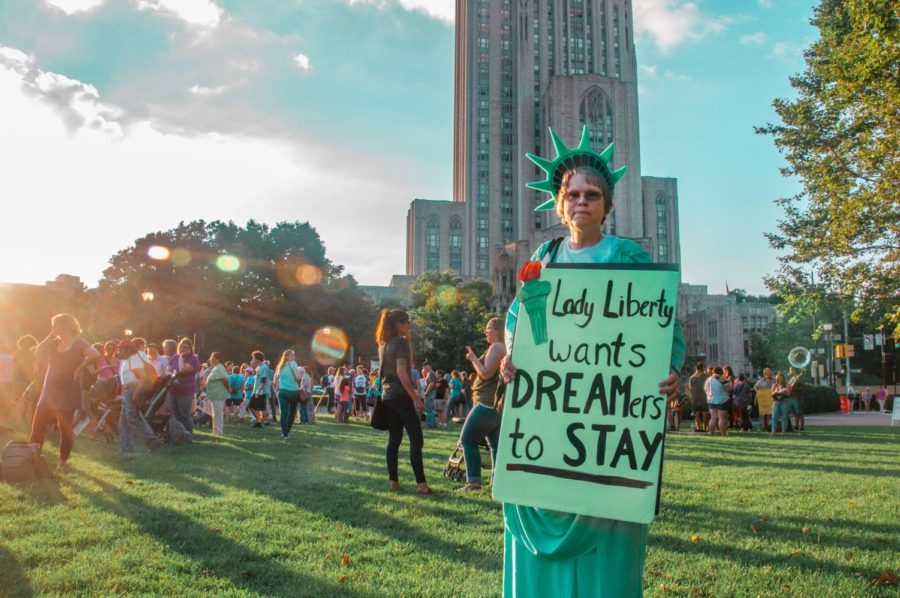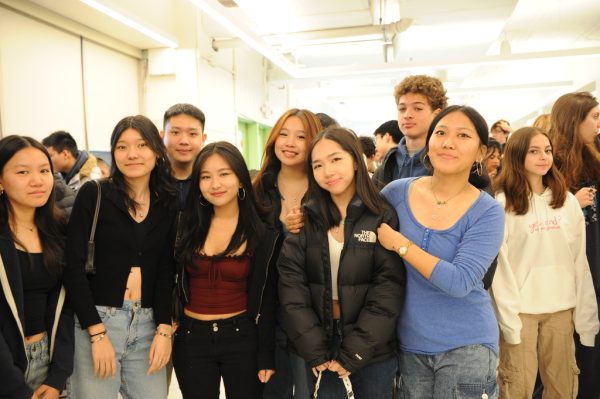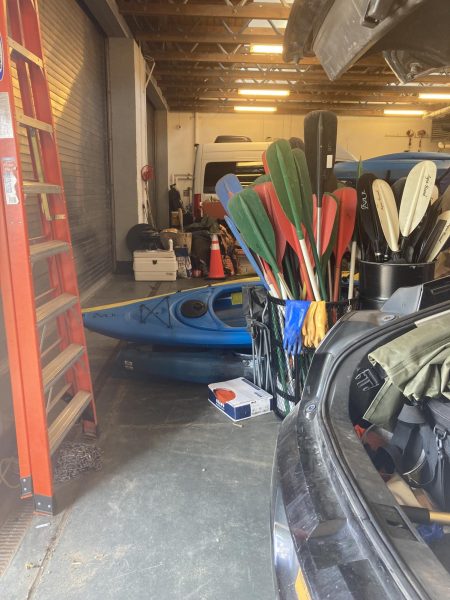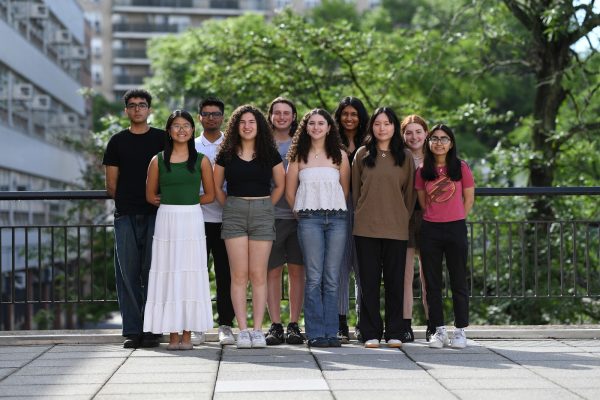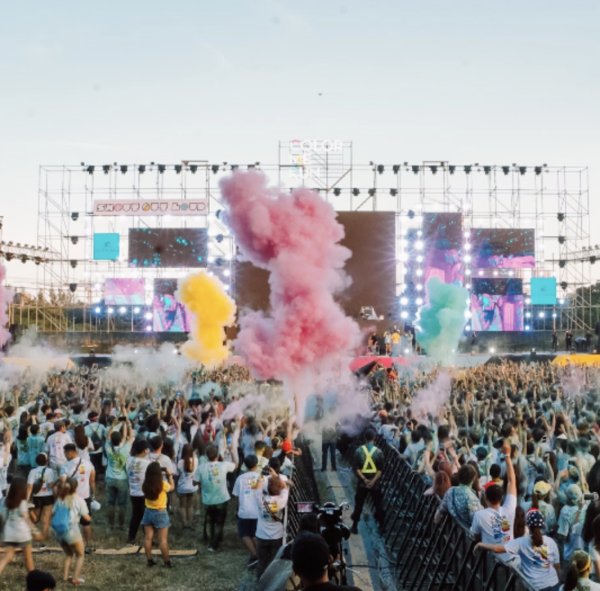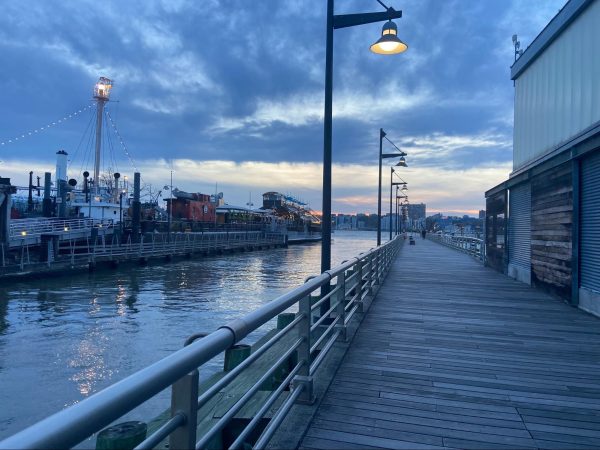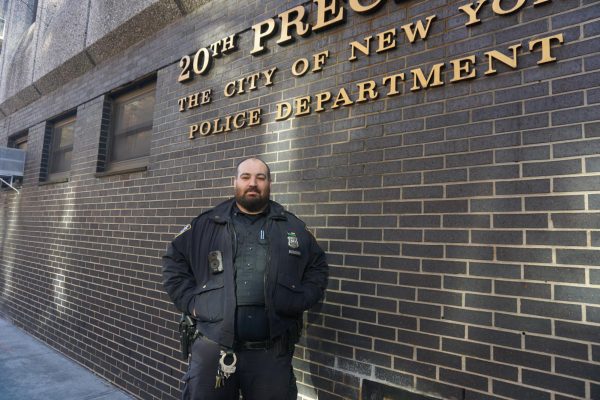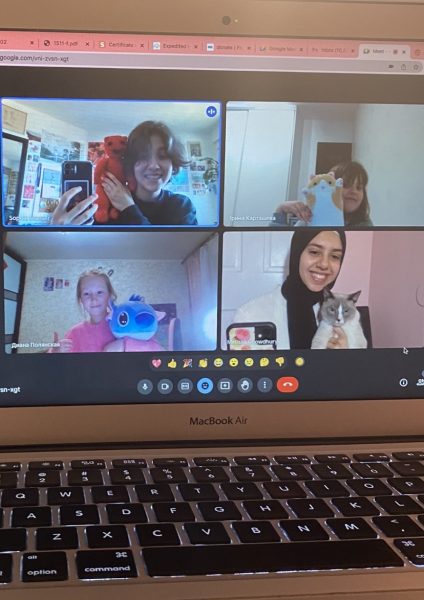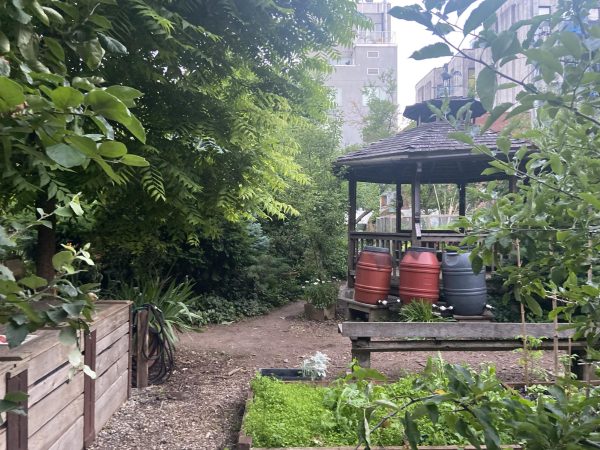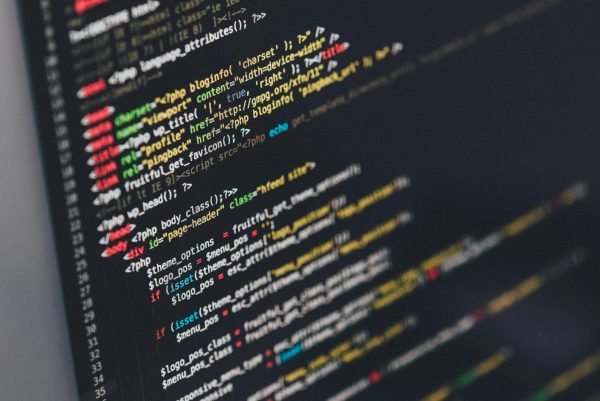The Immigrant Experience
An exploration of how immigrants and their children feel about their experience in America.
A woman advocates for immigrants to be allowed to be citizens in the United States, while dressed up as the Statue of Liberty.
Your house is gone. Your family is split. Your hands are dirty. Your clothes are ripped and your shoes are missing. You’re on the floor, trying to get up, but you keep falling over rocks.
This is the experience of immigration personified. This is what they face in America, the place where dreams prosper. They don’t start from the same place as others whose families have cultivated a generational history here. They stumble over challenges of getting jobs. Their culture is ripped and lost.
Everyone has heard of the American Dream, but there is so much history and tension to unpack in those two words. The concept of the American Dream has caused people to drown in poverty. Sure, in comparison to the lives that other immigrants have led, this improvement is great. Still, many people seek to achieve the wealth of those who have been in this country for ages and are met with the harsh truth that parents can only pass that sliver of hope to their children, who continue the cycle until they eventually gain that generational wealth.
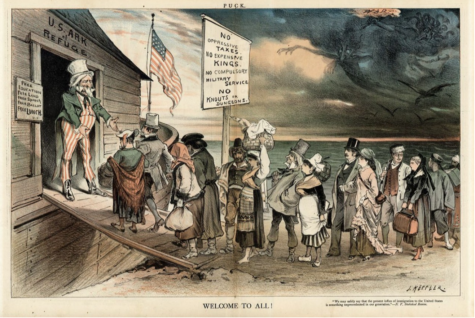
The wave of old immigrants started in the 1700s, with North and Western Europeans immigrating to America being the majority. However, this shifted in the late 1800s when the majority of people immigrating came from countries in Eastern Europe as well as Italy, Russia, and China. These immigrants established places where they could feel welcome, such as Little Italy and Chinatown. Despite this long history of immigration, more than 62% of immigrants have faced discrimination in their new homes.
Immigrants and their children struggle to find their identity. They find it hard to determine whether or not the insult they received was intended as a joke, and they try to normalize the microaggressions they face.
They are faced with hearing dismissals that their achievements were the result of their race rather than their efforts. Labels and stereotypes are pushed onto them simply because of the way they look, which is something they cannot control.
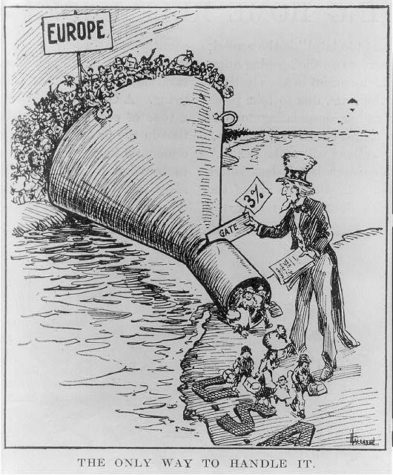
All these aspects of themselves – their culture, their identity – are things that they love and are proud of. However, others in America pressure them to feel shame for their identity, their background, and their struggles. Should they really be feeling ashamed?
As Ruby Moran ‘23 said, “I have always been and will always be proud to be Latina.”
This perception of identity is cultivated from experiences. Children are forced to change their perceptions in these underserved communities and reduce their future job options, not because they enjoy these menial jobs, but because those were the only options they had. This is a detrimental mindset for the children, and it is disheartening for parents to hear. Beyond children people are often associated with their nationality and use that perception to build who they are as a person through the words that they say and the customs that they follow.
This poses the question: Does your nationality define you? Identity is not limited to nationality, but also your individuality. Culture is a beautiful concept; it connects people and connects hearts; it enables people to grow and be themselves. At times, people try to disregard the beauty of having a culture, and it may be hard not to resent certain aspects of the way you were raised, but, in the end, culture makes people proud.
There is so much that many people in America can’t relate to, so many things they haven’t tried, so many sights they haven’t seen. These unique experiences are what make a culture. Even the clothes you wear and the hair on your head, help to define you. Families, whether blood-related or found, grow and increase when people feel connected – when they celebrate these aspects of themselves. As Rumerkis Sosa ’24 said, “The music, the food, the people; I love it all.”
No matter the hardships faced, they feel love for their culture. It has guided them towards their goals, helped define them and their missions. They express their culture through many ways. This applies to the children of immigrants that follow the cultural traditions of their parents.
Immigrants and their children hold the places that they are native to dear to their hearts. These places connect families. For instance, Chrystal Mallouras ’24 describes her visits to the counties of her parents, cherishing the reunion with her Greek and Bolivian origins. She said, “I love traveling there — the food is delicious, and beaches are so fun.”
Whether they are an immigrant or a child of an immigrant, no matter where these people were born, they grew up eating their cultures’ food. For Kareem Mailk ’23, “Pakistani food is all I’ve known since birth,” and that can be the same for any child of immigrants who eats their cultures’ traditional cuisine. Growing up while eating those foods makes everything else seem foreign, and other versions of the food are not the same as your parents’ cooking.
Immigrants tend to become friends with others that they can relate to and resonate with. “I live in a very Greek neighborhood and have a lot of my Bolivian family in the United States,” said Mallouras. It’s interesting how people establish their own communities and gravitate towards those that are similar to them.
People take pride in their culture. It becomes a part of who they are and follows them throughout life. As Malik described, “Pakistani culture is something that I couldn’t even begin to write about — just picture a very close knit society, especially within families. I wish that I spent more time with them.” Still, the grand scale of these families and the geographic barriers make connecting difficult. “I have a very large family both here and in the Dominican Republic,” Jhoan Rosario ’24 said. Culture comforts people and allows them to express themselves. Despite the physical barriers, the warmth that immigrants and their descendants feel from their families and cultures is still apparent.
Minor actions and habits, such as the clothes you wear, can reflect and be influenced by your culture. “I love expressing my culture, as it is part of my identity, and I find that really comforting,” said Steven Mendez ’24. At least, that is the expectation.
Tensions exist between culture and identity, and this is especially true for the immigrants of America. There is a sense of not being closely knit with their cultures and not being as involved as someone that lives in their native country. There can be discord that stems from a “difference in mindset when it comes to roles in society,” Sosa explains. “The differing political opinions can generate tension, ” said Lydia Du ’24. These differences come from the varying experiences faced and values developed. It’s difficult to truly meditate these differences and come to an understanding between them.
It isn’t surprising that immigrants tend to have emotional distance between their relatives, in addition to geographical distance. “I don’t have a strong connection. I don’t know anything about relatives,” said Iffath Liaquat ’24 when recalling his relationship with his extended family. It is hard to save the string of culture when it is so far away; there are things you will inevitably be unaware of. Understandably so, the relations are strained as if there is a barricade between an immigrant’s ancestors and descendants. The challenges faced, the languages spoken, and the clothes worn are not the same. “I am first generation American, while basically all of my family are Jamaican immigrants or still live in Jamaica today,” said Chanel Champagnie ’24, recognizing a large difference that others may not.
It is easy to assimilate into a place you’re born into because of the pressures of that society. This assimilation makes people question their identity and integrity as a person. It’s a complex relationship between trying to fit into America as an imposter and maintaining your nation of heritage. At what point do they realize what they have been doing?
Children of immigrants follow American ideals and push others to establish the same mindset as them, to the point of creating stereotypes about their own culture. “I think I have an ingrained sense of ‘China is bad because communism is bad.’ I’m trying to take everything with a grain of salt,” Du said, as she reflects on what she has been pushed to believe. It can be difficult to maintain a balance between two identities.
It’s hard not to question the difference between your inward and outward appearance when people have faced and fear judgment. “I feel as though I am Jamaican, but not really, and I am also American, but not really. I neither have the Jamaican accent, I neither have a stable American background, nor do I fit American beauty standards. I am neither Jamaican nor American. I’m more floating in a limbo between the two,” said Champagnie. She captures the struggles of immigrants and their children; they cannot decide if they are any less “Jamaican” or “American.” They may not speak the language nor face the same trials that natives of their country do. It’s also difficult to express your frustration with being all of these without feeling the need to simplify it into something that people can understand, alongside the tensions that your family relations can create.
Moran, whose parents came from two different countries, struggles to come to terms with both cultures. “That, along with my relationship with each parent, creates this feeling of being more welcomed in one community than I ever have in another. I feel more comfortable saying ‘I’m Colombian,’ but I know I need to acknowledge that I’m Honduran too,” Moran said. It’s hard for her to determine how to present herself when she, as many others do, feels as though she doesn’t understand her own culture and isn’t close to the people who do.
This tension is evident among families no matter how close they are. “There’s always the difference in mindset when it comes to roles in society,” Sosa said. It’s not something that can be controlled; rather, it’s the result of differences in the ways that you grew up. But the mindsets are still so different that conflict is inevitable. There is an understanding that the things one was exposed to shifts one’s mindset, but it still can be frustrating to have to defend a standpoint that you find to be so obvious. Beyond this, the pressure to assimilate into what society expects can create division between immigrant parents and their children. “I think I’ve become fully Americanized. It gives me a sense of melancholy at times and serves as another barrier between me and my parents,” said Du.
It is difficult for people to define who they are when there is so much that confuses them and so many people for whom they do not know. “I don’t have the strongest relationship with my culture. I didn’t know how to react when they presented themselves with a wealth of a cultural background,” said Sirajum Munira ’24. It can be hard to come to terms with feeling dissatisfied with what you are doing and treating fitting into your culture as a task with set things that you must check off from your list.
There are some things that you can’t control and some things that you don’t want to hide. “I was not and am not more outspoken than the common Jamaican child,” said Champagnie. Some cultures expect people that fit into certain characteristics to hide their voice, but the beautiful thing about identity is that one person can adopt what they have seen and experienced. As a first generation student of Jamaican parents, Champagnie has not faced corporal punishment and associates herself with speaking up about what she defines as wrong. Although adopting American ideals can create tension, it is ultimately up to the individual to decide what they want to internalize.
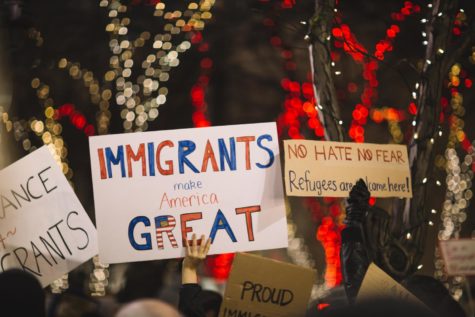
In the end, there is no limit on the judgment people can provide not on your true self, but on an entity that supposedly defines who you are as a person. Identifying with a culture that is the target of judgment and insults is something that people have all faced at some point. When faced with such aversion, people often view their culture in shame and are confused as to which side of themselves they should show to others. ”Initially, I tried to distance myself from it, because I thought it’ll make me weird. Sometimes I still do,” Liaquat reveals. They battle the discrimination and stereotypes that others push on them, such as during the COVID-19 pandemic. “Learning to accept my Chinese heritage while dealing with the pandemic and Trump referring to the coronavirus as the ‘China virus’ was a trial, to say the least. It’s still a work in progress, but I’ve accepted that this is still a part of who I am,” Du said.
“I’m not scared of it,” Sosa explained, referring to her perspective of culture. “Of course there are ups and downs, but the core of the culture is beautiful, no matter how much we’ve corrupted it since.” Identity, culture, and family history is what makes people who they are. Despite the discrimination and confusion that comes with it, culture makes the world diverse.
“Of course there are ups and downs, but the core of the culture is beautiful, no matter how much we’ve corrupted it since,” said Romerkis Sosa ’24.
Mariam Samake is a Chief Graphic Designer and a Copy Chief for ‘The Observatory’ yearbook. She is also a Staff Reporter for 'The Science Survey.' She...

